It’s my first time posting here, so bare with me a bit to try to accurately represent my horse and her background. As for me, I’m an adult amateur trying to learn dressage after competing in a bit of everything growing up.
2013 Morgan mare, working on training/1st dressage.
- 2017 foaled/nearly starved to death/became nearly feral, entered a “rescue”.
- 2019 I brought her home and lightest of the light started her.
- 2020 more light work, 2 month break thanks to Covid, more light-moderate work, tripped and fell undersaddle resulting in lead swapping behind - resolved with bodywork.
- 2021 light-moderate work, began working with a dressage trainer in the fall in moderate work.
- 2022 moderate-full work, competed at schooling shows in intro/training dressage, making leaps and bounds of progress - WTC, leg yields, starting shoulder ins - occasional issues under saddle but not frequent enough to cause major concern - trainer attributed it to introducing new things to a sensitive horse.
- 2023 moderate-full work, issues under saddle becoming more frequent, my trainer stopped a training ride with her, vet visit in April, time off for most of the summer for rider injury - trying to bring back into work now, but having issues + need saddle fit adjusted.
During the vet visit in April 2023, I had a basic lameness exam and rear suspensory ultrasounds completed with suspicions of DSLD. She flexed 1/5 on her left hind, with the joint of origin being the stifle - the vet felt rounding. She also had SI pain with palpation. As far as her suspensories go, the vet described it as “extensive wear and tear” with fluids on the suspensories but not with the label of DSLD - vet agreed that it could be the result of starving + foaling as a 3/4 year old. The vet suggested I could inject stifle + SI, but I opted to focus on strengthening before starting maintenance… Until I got hurt and my horse got the summer off.
Since being in full-ish work (starting in late 2021), actively working towards dressage, various issues have cropped up:
- If ridden 3 days in a row, day 1 will be great, day 2 will be okay, and day 3 will be terrible
- Usually is best after a day or two off
- Emotional, reactive, occasionally explosive when asked for ‘regular’ things and even moreso when asking for ‘unexpected’ things
- Tension, tension, tension
- Mouthing the bit, gaping
- Travels crooked, I believe haunches to the left
- So far unable to train haunches in, immediately reactive
- Resistance and tension in leg yielding, moreso yielding left to right
- BTV+low going in snaffle, or hollow, stiff
- Hollows, slams on brakes seemingly randomly
- Reluctant or reactive to changes of bend
- Lack of connection in canter
- History of lead swapping and disunited in canter
- History of stumbling behind
- Suspicions of hormonally related behavior, potentially better on Happ-e-mare supplement
- Rides better in a bareback pad, even with a ‘fitting’ saddle - difficult behavior happens regardless though
- Can stand camped out, or one hind foot cocked - never square by choice (but better while in full work)
I am currently scheduling again with the vet who did the exam in April 2023 to dig deeper, and I have a saddle fit appointment scheduled (loss of muscling definitely made the fit of our current saddle not great). I’m hoping to complete a bute trial before the vet appointment (and potentially a gabapentin trial?). Beyond completing a basic lameness exam again, what would you do/suspect? I’m curious of neck/back issues, open to injecting the stifle + SI, EPM testing, a neuro exam, doing x-rays of all four legs… But I also want there to be a cut off point, because of her suspensories and always being a bit sensitive/emotional/NQR mentally - a career change is also on the table if she just can’t handle dressage, but that’s a whole other can of worms.
And some pictures for context… 2017 rescue intake photo:
Feb 2023 - in full work
Oct 2023 - to show loss of muscling from summer break (and reason for saddle fit being meh)
Pictures of hind legs 2023

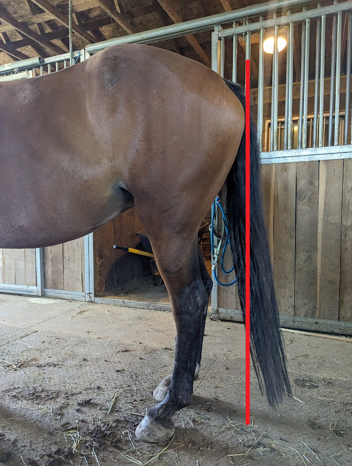
Happy to answer any questions or provide anything else.

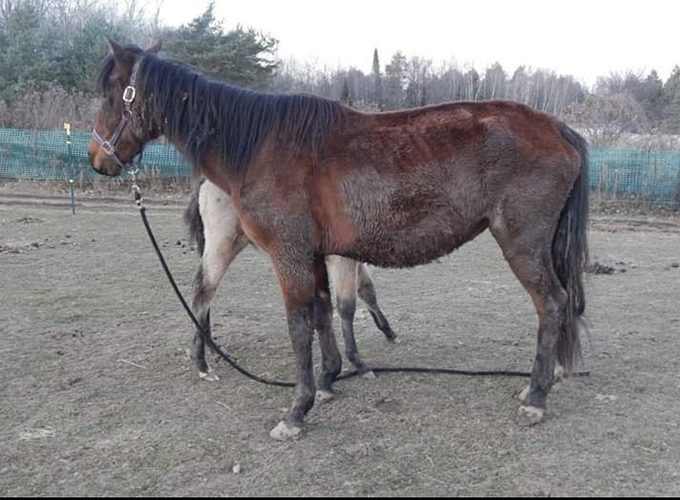
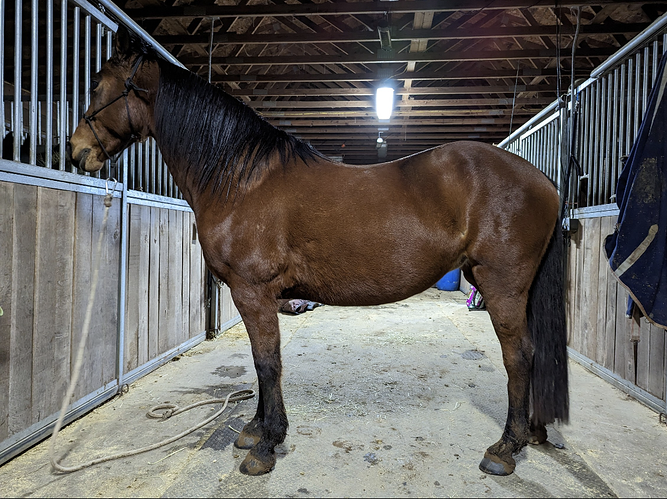
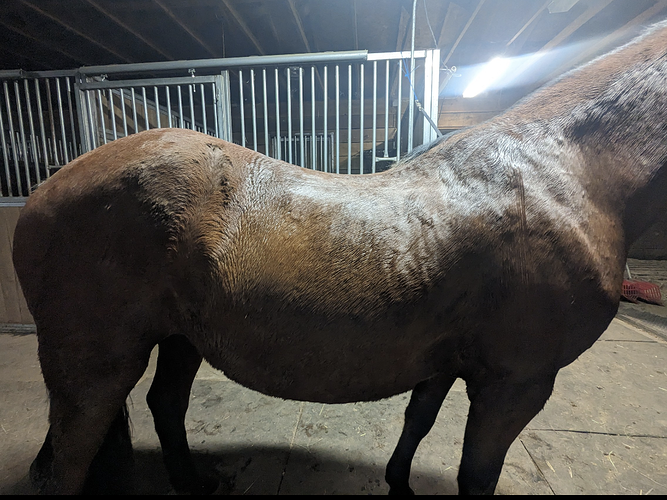
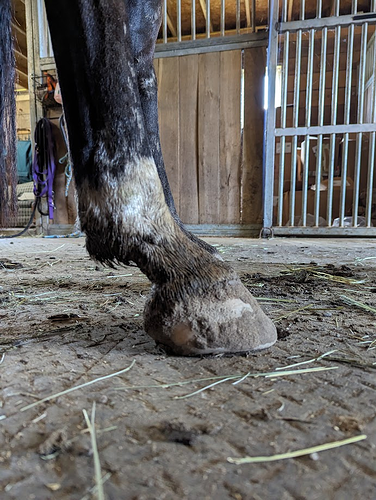
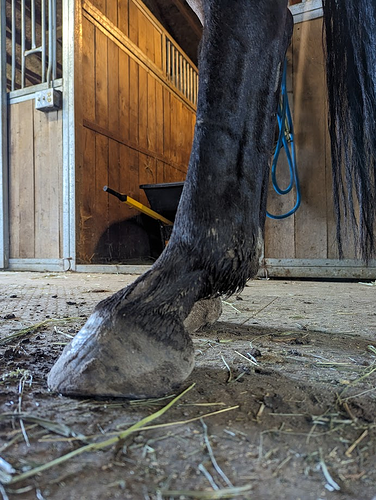
 You could try a nuchal ligament biopsy.
You could try a nuchal ligament biopsy.
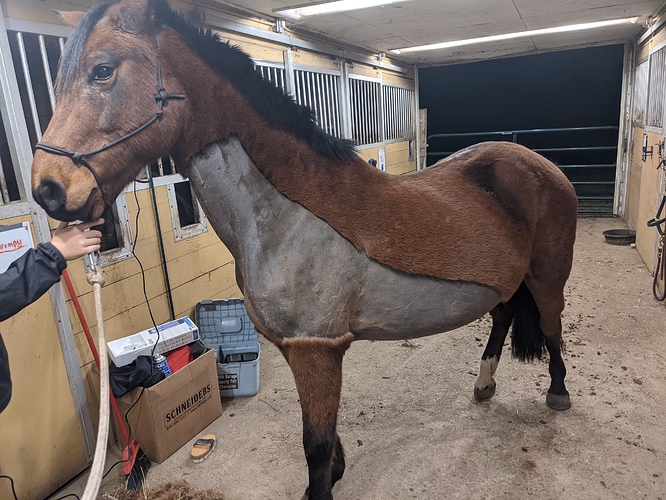
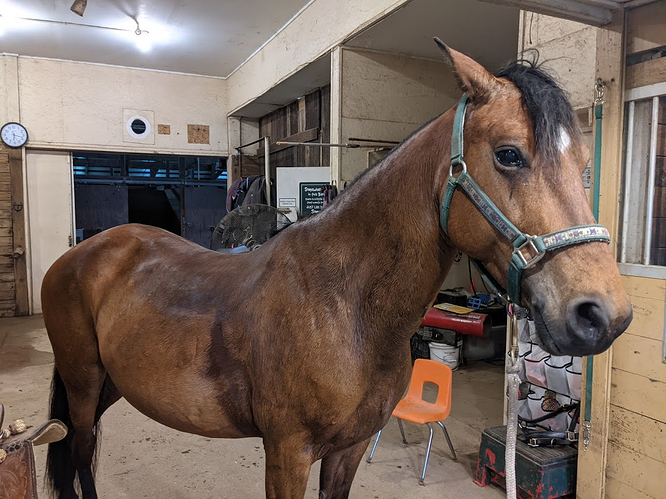
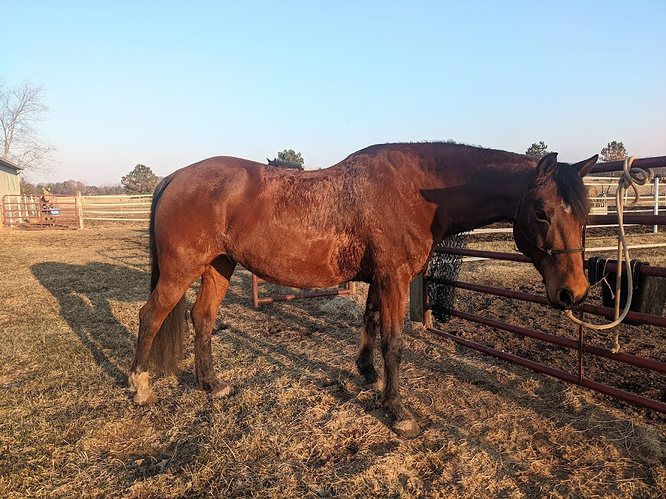
 She’s lucky to have you!
She’s lucky to have you!